The Aftermath of an Avalanche
Equipped with OWC Atlas memory cards, Lloyd Chambers explores California's Eastern Sierra, capturing the devastation and rebirth brought by avalanches.
Lloyd Chambers • Aug 04, 2023
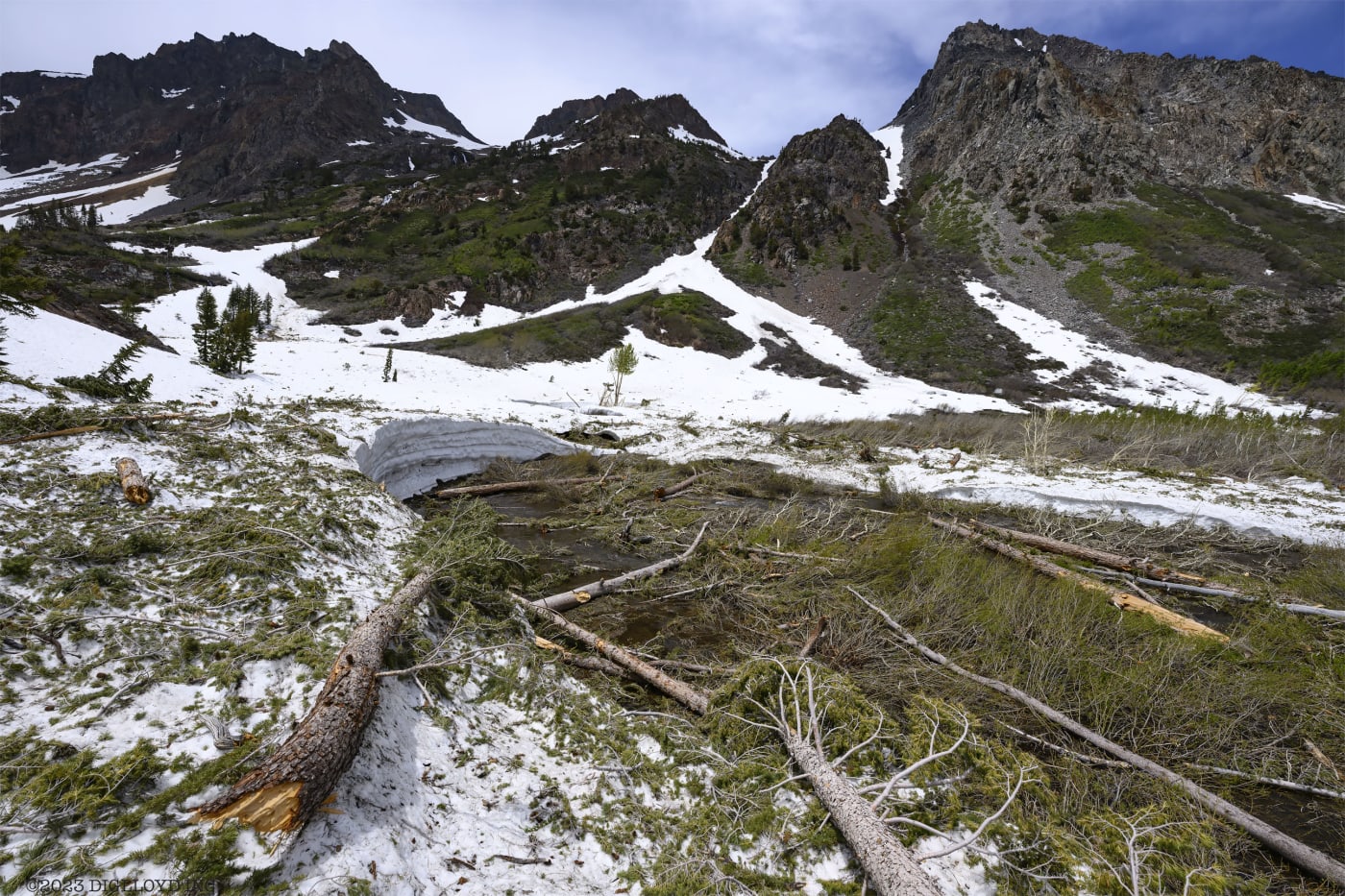
An outdoorsman and skier friend living locally in the Eastern Sierra Nevada for most of his life commented in early spring that “it looks like the ice age up there”. Indeed, just a few years like the winter of 2022/2023 would transform this year’s persistent snowpack into nascent glaciers within a few years.
Happily, summer has its own priorities—as those roasting in some areas know well—notwithstanding our June being as cold as any in 40 years, which greatly slowed until mid July. Wild water will churn violently down every creek and drainage into late August. And some entombed trees and plants might not see the light of day this year other than as a dim glimmer through the avalanche snowpack.
Destruction is the price of renewal
Death is the price of life, and often destruction is the price of renewal, especially in the wild. But nature abhors a vacuum, and whether avalanche or fire, the land bounces back with every species trying to elbow-out competitors.
For example, burned-off conifers (highly unproductive habitat) leads to explosive new growth (e.g. aspen) which results in far greater and more varied carrying capacity for numerous species for 100 years or so—until the conifers take over again.
Sometimes the trees we personally love are lost to avalanches, like this strand of aspen in Lundy Canyon, one of the most popular 'draws' for fall color in the entire Eastern Sierra. Every canyon in the Eastern Sierra experienced such avalanches.
I counted at least 7 major avalanche zones in Lundy Canyon alone. These photos will take you through the heart of the devastation. Here, from high to low and 100 yards across, these trees were snapped-off like toothpicks at 12 feet ~= 4 meters above grade. Which means the avalanche surged down atop a 12-foot-deep dense snowpack.
Venturing into an environment like the Eastern Sierra, you need to have the utmost confidence in your gear. Since 2022, I have captured all my images on OWC Atlas Ultra cards.
Nothing in this area withstood the violence of the avalanches. The result is a huge mess, but with dense growth springing up quickly. Aspen trees regenerate by seed and rhizomes, so countless shoots will spring up everywhere around the “mother” trees, some of which are actually the same large organism. Many other species will get a chance at life-giving sunlight for some seasons to come.
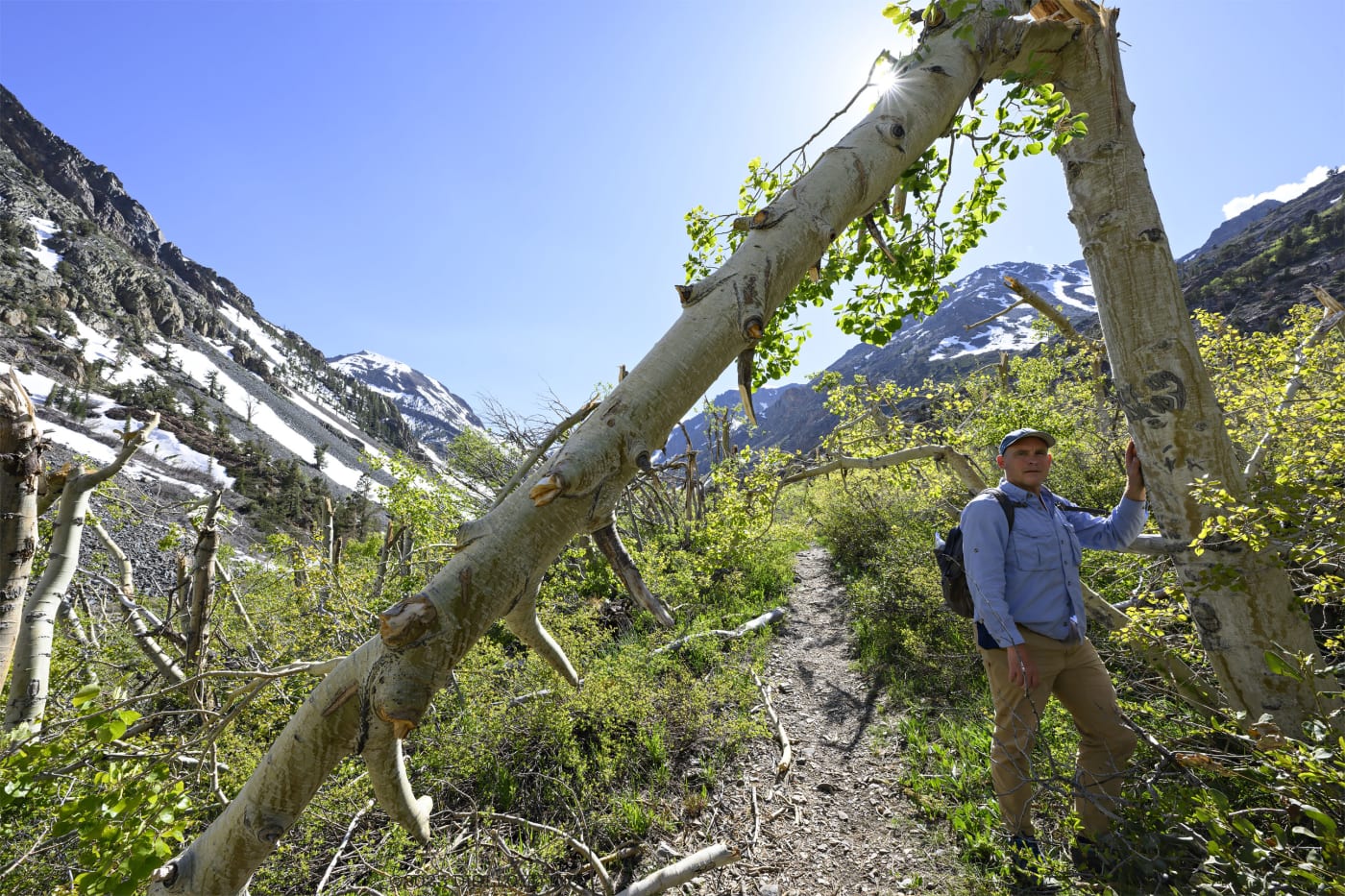
Photo data:
f11 @ 1/125 sec electronic shutter, ISO 64; 2023-06-21 16:28:37
Nikon Z8 + Nikon NIKKOR Z 14-24mm f/2.8 S @ 14mm
ENV: Lundy canyon, altitude 8050 ft / 2454 m, 60°F / 15°C
RAW: LACA corrected, distortion corrected, vignetting corrected, +40 Shadows, +10 Whites, +10 Clarity, USM {8,50,0}, diffraction mitigating sharpening
Below, the avalanche zone of snapped-off toothpicks (aspen trees) is plain to see.
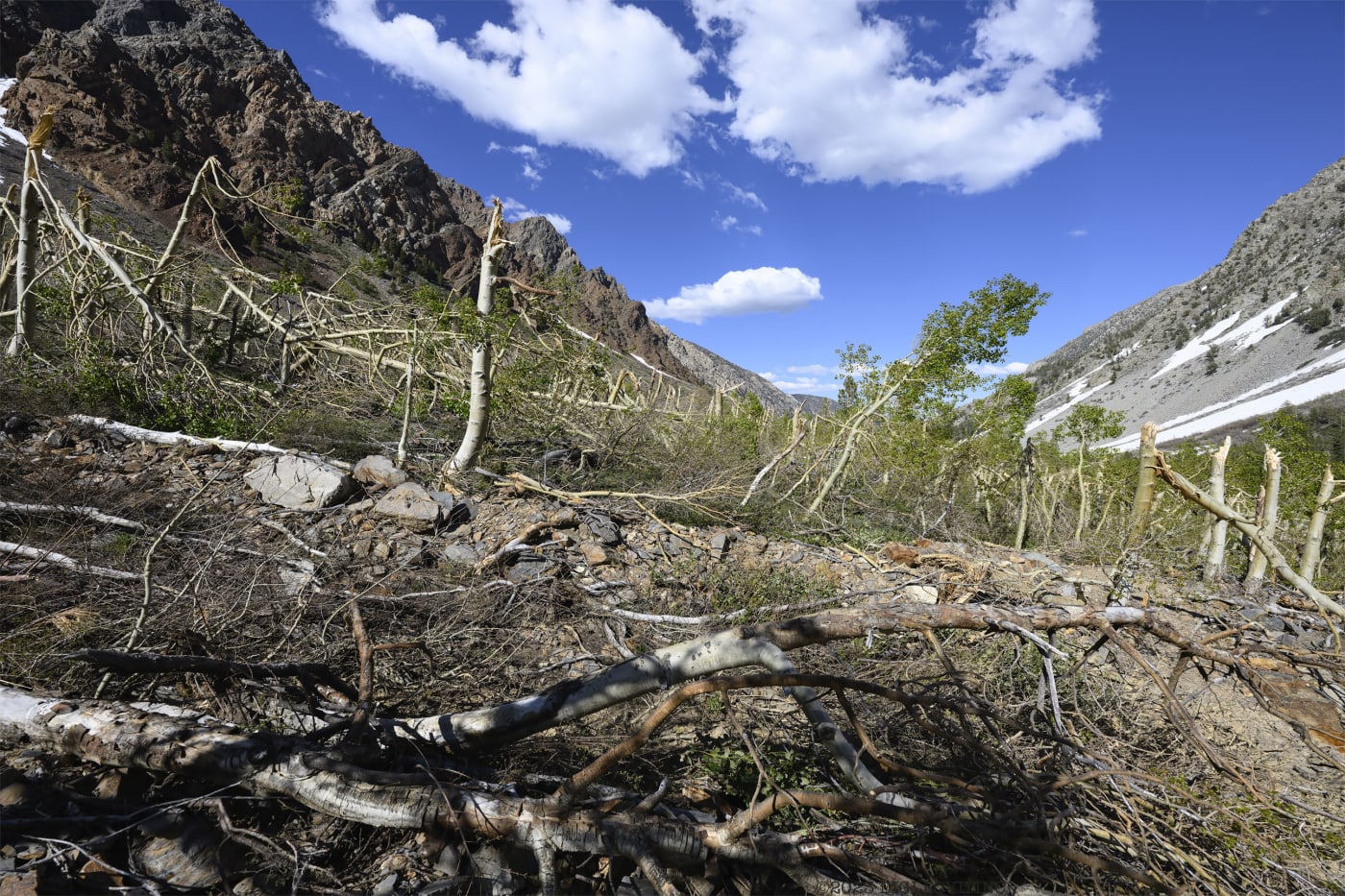
Photo data:
f8 @ 1/320 sec electronic shutter, ISO 64; 2023-06-21 16:52:18
Nikon Z8 + Nikon NIKKOR Z 14-24mm f/2.8 S @ 14mm
ENV: Lundy Canyon, altitude 8050 ft / 2454 m, 60°F / 15°C
RAW: LACA corrected, vignetting corrected, push 0.66 stops, +10 Whites, +10 Clarity, diffraction mitigating sharpening
Below, the avalanche zone is plain to see. For more, see Lundy Canyon: Massive Avalanche Damage from Winter of 2022/2023 — Trees Sheared-Off Like Toothpicks.
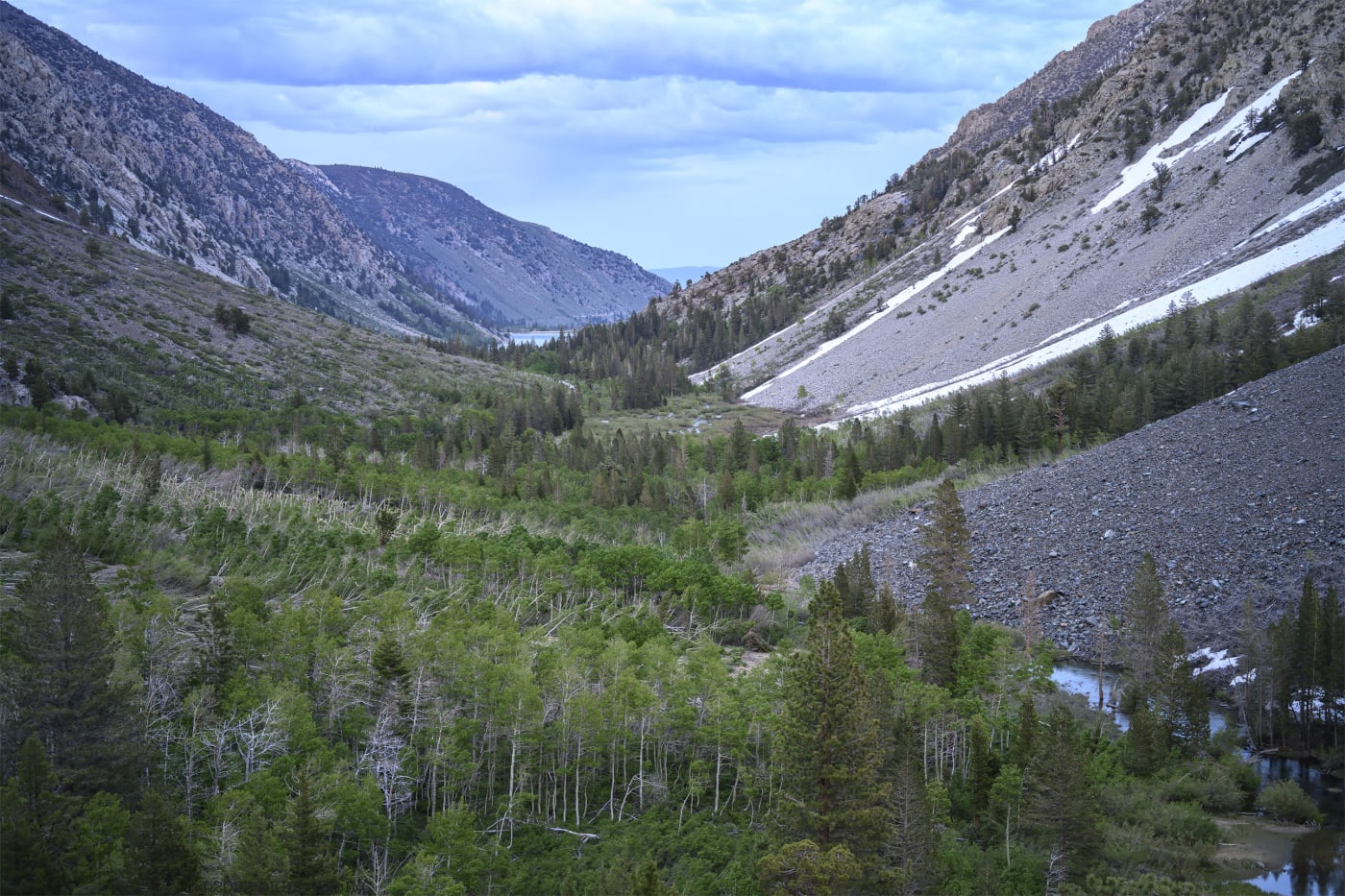
Photo data:
f2 @ 1/10 sec electronic shutter, ISO 64; 2023-06-27 20:28:05
Nikon Z8 + Voigtlander Z APO-Lanthar 50mm f/2 Aspherical
ENV: Lundy Canyon, altitude 8200 ft / 2499 m, 58°F / 14°C
RAW: Enhance Details, WB 5300°K tint 0, push 0.66 stops, +30 Shadows, -100 Highlights, +40 Whites, saturation -10, +20 Dehaze, +10 Clarity
Dry Creek Aspen
These massive aspen trees (Populus tremuloides), the largest I have ever found in the Eastern Sierra, have survived the local beavers to grow to giant size because this creek is normally dry by mid-July. Here it is up to two meters deep in late June, and a few days later it was rising fast as the weather turned hot.
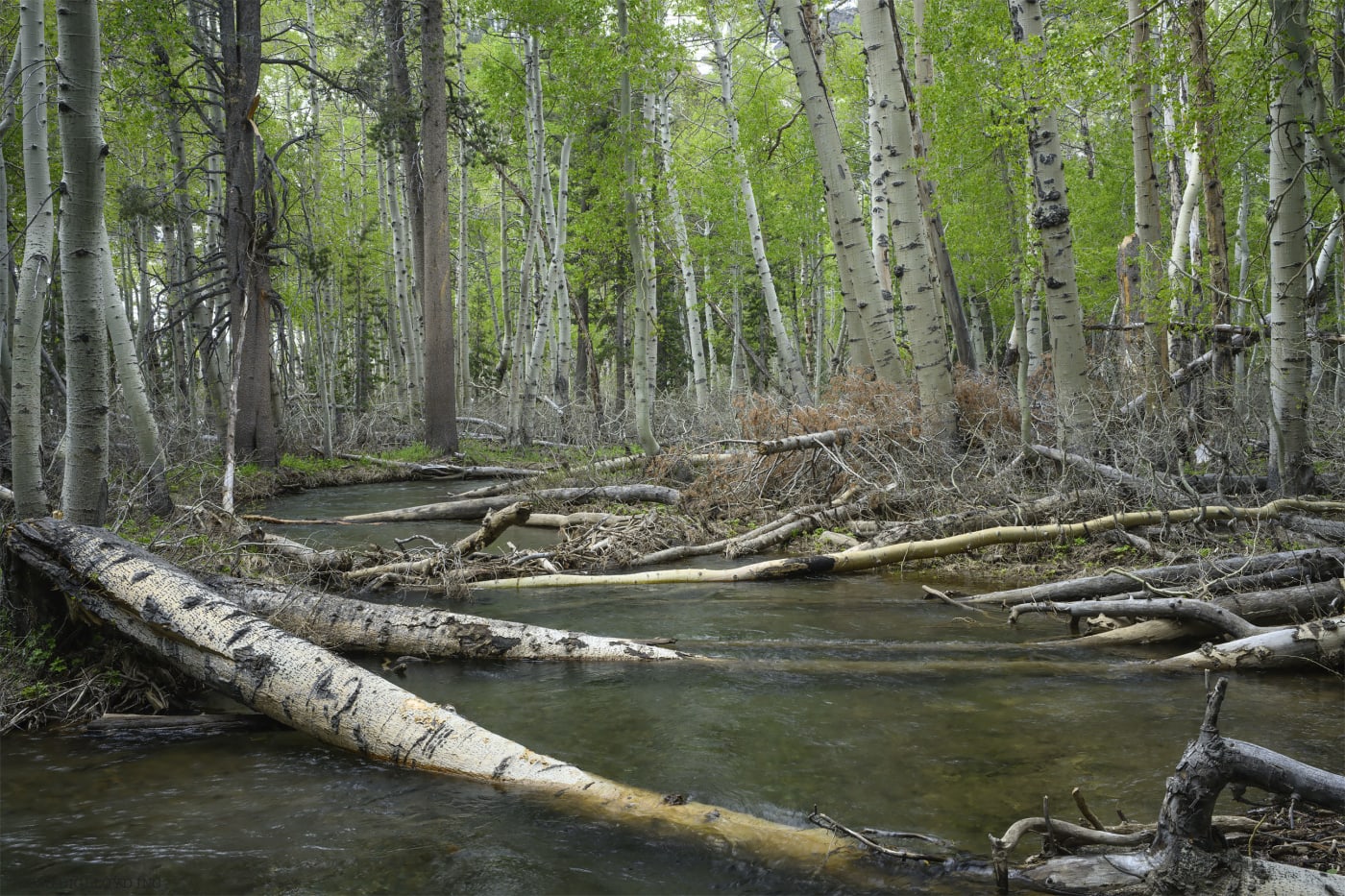
Photo data:
f8 @ 1/15 sec electronic shutter, ISO 64; 2023-06-24 11:19:49
Nikon Z8 + Voigtlander Z APO-Lanthar 35mm f/2 Aspherical + polarizer Breakthrough Photography X4 partial
ENV: Lundy Canyon, altitude 8400 ft / 2560 m, 60°F / 15°C
RAW: Enhance Details, WB 4650°K tint 12, +50 Shadows, +10 Whites, +10 Clarity, diffraction mitigating sharpening
Ice-Block Avalanche
The terminus of most avalanches are broad and flat snowpacks, alluvial fan style. But this one was densely packed to ice-like consistency, apparently let go and roared down 1,500 vertical feet, shattering into an awesome boulder field replete with embedded rocks and boulders. The boulder at right is 10 feet tall.
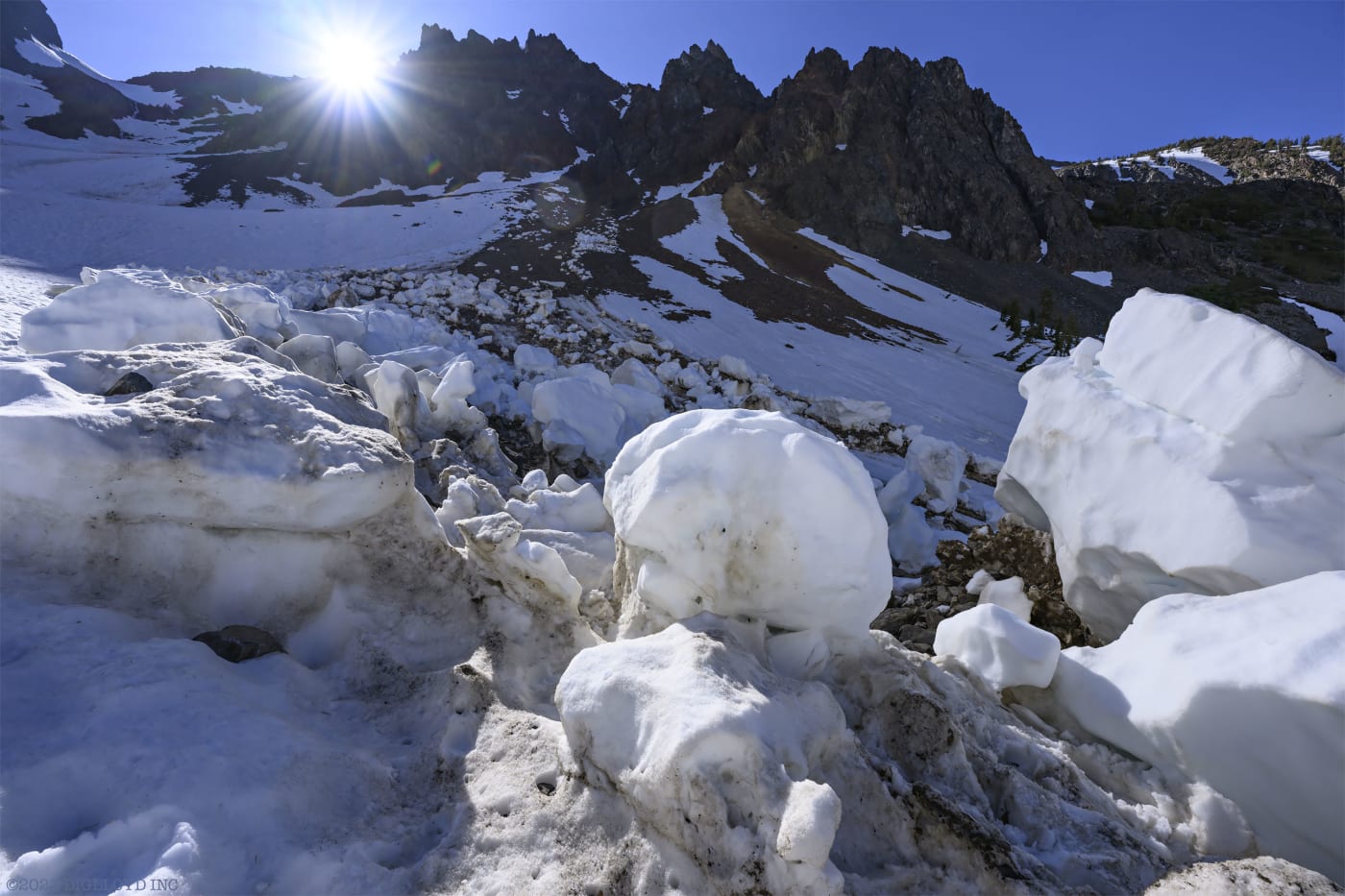
Photo data:
f8 @ 1/400 sec electronic shutter, ISO 64; 2023-06-24 17:19:50
Nikon Z8 + Nikon NIKKOR Z 14-24mm f/2.8 S @ 14mm
ENV: Lundy Canyon, altitude 9050 ft / 2758 m, 50°F / 10°C
RAW: Enhance Details, vignetting corrected, WB 5100°K tint 18, push 0.66 stops, +80 Shadows, +10 Whites, +10 Clarity, USM {10,50,0}, diffraction mitigating sharpening
Below, an up-canyon view at 9,050 ft elevation ~= 2760m. The snow here is of unknown depth, but at least six feet (2 meters) where not avalanched and perhaps 30 feet deep in this avalanche zone. Normally one can hike the trail up this slope to Twenty Lakes Basin near Saddlebag Lake.
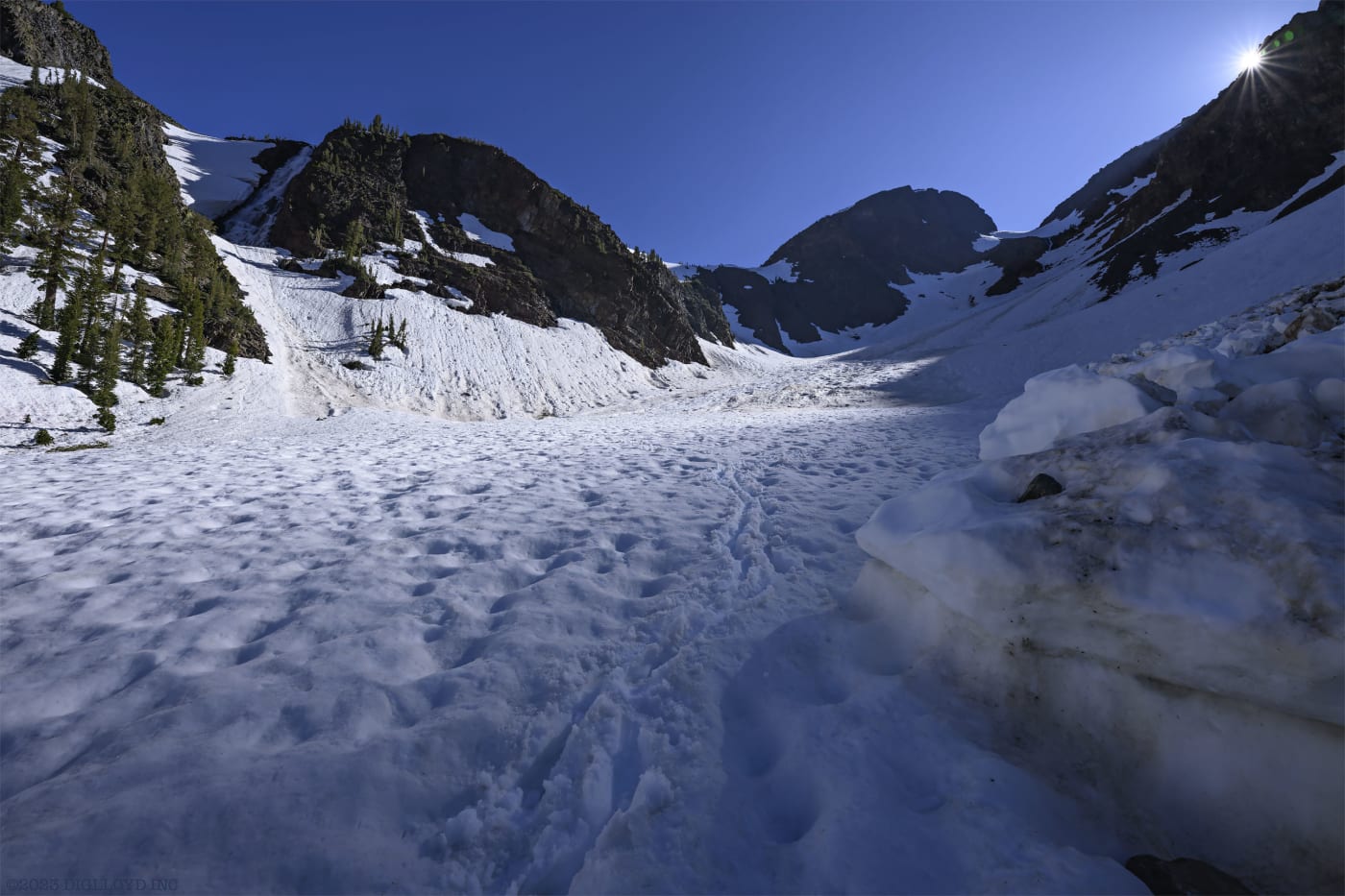
Photo data:
f10 @ 1/400 sec handheld electronic shutter, ISO 64; 2023-06-24 17:21:43
Nikon Z8 + Nikon NIKKOR Z 14-24mm f/2.8 S @ 14mm
ENV: Lundy Canyon, altitude 9050 ft / 2758 m, 50°F / 10°C
RAW: std, Enhance Details, vignetting corrected, WB 5100°K tint 18, AI Denoise 10, USM {10,50,0}, diffraction mitigating sharpening
Avalanche debris
This image captures the devastation and thick snowpack at about 8,600' elevation. The creek has cut through the snow, which is about 30 feet (10 meters) deep as seen here. Bits of trees and entire tree trunks up to the very largest size abound. I spent hours clearing trail (sawing with a hand-saw) to get to this point.

Photo data:
f9 @ 1/320 sec handheld electronic shutter, ISO 64; 2023-06-24 12:57:15
Nikon Z8 + Nikon NIKKOR Z 14-24mm f/2.8 S @ 14mm
ENV: Lundy Canyon, altitude 8600 ft / 2621 m, 70°F / 21°C
RAW: LACA corrected, vignetting corrected, +30 Shadows, +10 Whites, +10 Clarity, diffraction mitigating sharpening, +30 Whites
Superbloom at low and high altitude
After several years of severe drought, every plant and insect and crawly thing is just bursting with energy, as if to make up all in a few months the difficulty of three years of drought. These Mule’s Ears (Wyethia helenioides) at 7,250 feet elevation are by far the largest I have ever seen, standing 3-4 feet tall! Part of an unheralded 2023 Eastern Sierra “superbloom”.
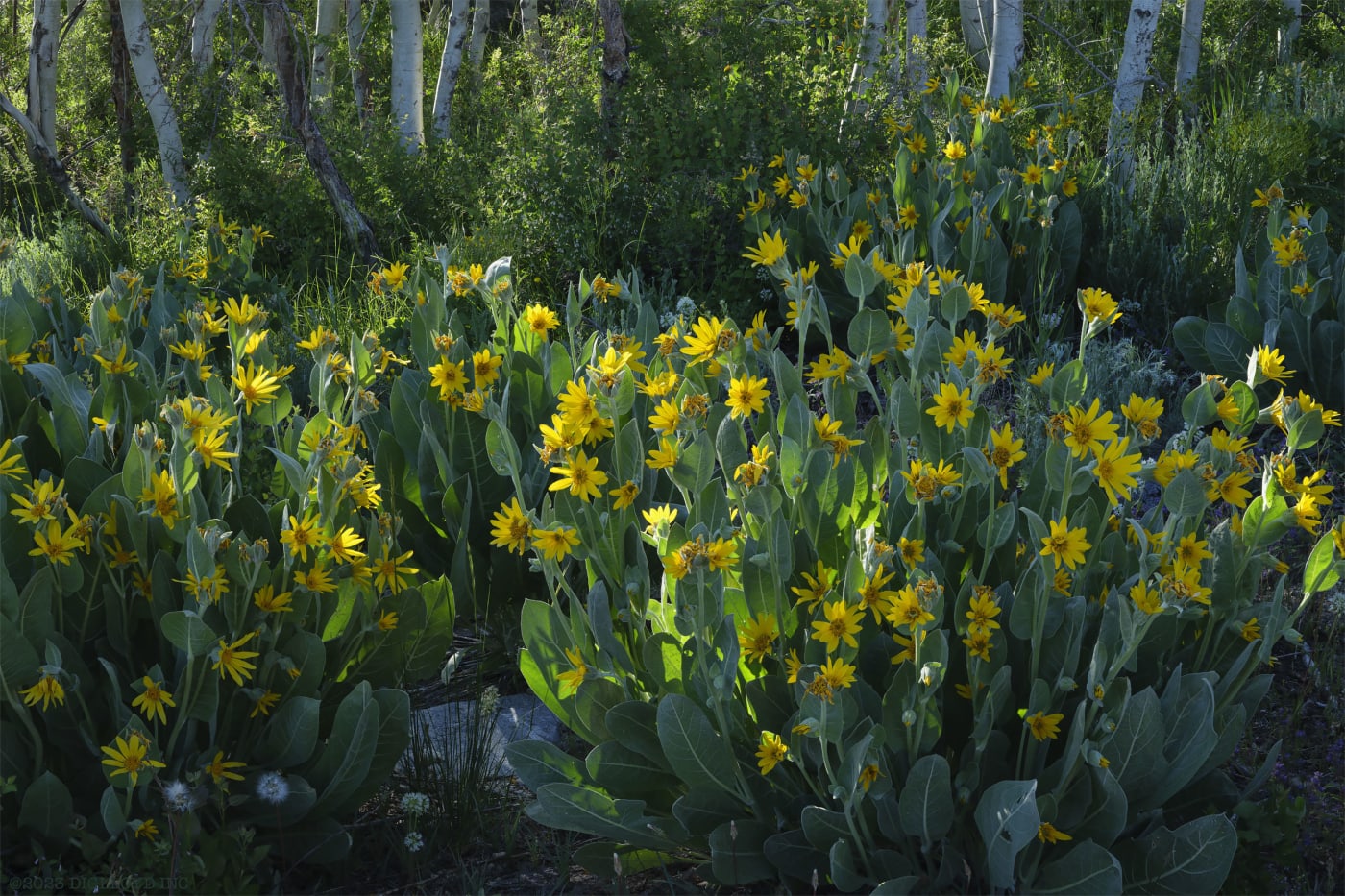
Photo data:
f9 @ 1/25 sec electronic shutter focus stack 25 frames, ISO 100; 2023-07-01 07:42:09
Fujifilm GFX100S + Fujifilm GF 35-70mm f/4.5-5.6 WR @ 57.6mm equiv (70mm)
ENV: Hilton Creek, altitude 7250 ft / 2210 m, 55°F / 12°C
RAW: WB 5100°K tint 22, +10 Whites, +10 Clarity
Wildlife
Beavers at the 8,000' elevation level on up in Lundy Canyon apparently all perished (no fresh beaver sign anywhere), though they were alive mid-winter, as gnawed-off aspen trees 12 feet up testify (beavers do not climb). Lower elevations will repopulate the area.
Based on past observations, I expect that many bighorn sheep died during the winter from avalanches. Deer were hard hit too, because the snow became deep at elevations normally snow-free.
The does (deer) I saw had new fawns and all looked like they were recovering from an emaciated state; reproductive success was likely poor this year due to the winter stress.
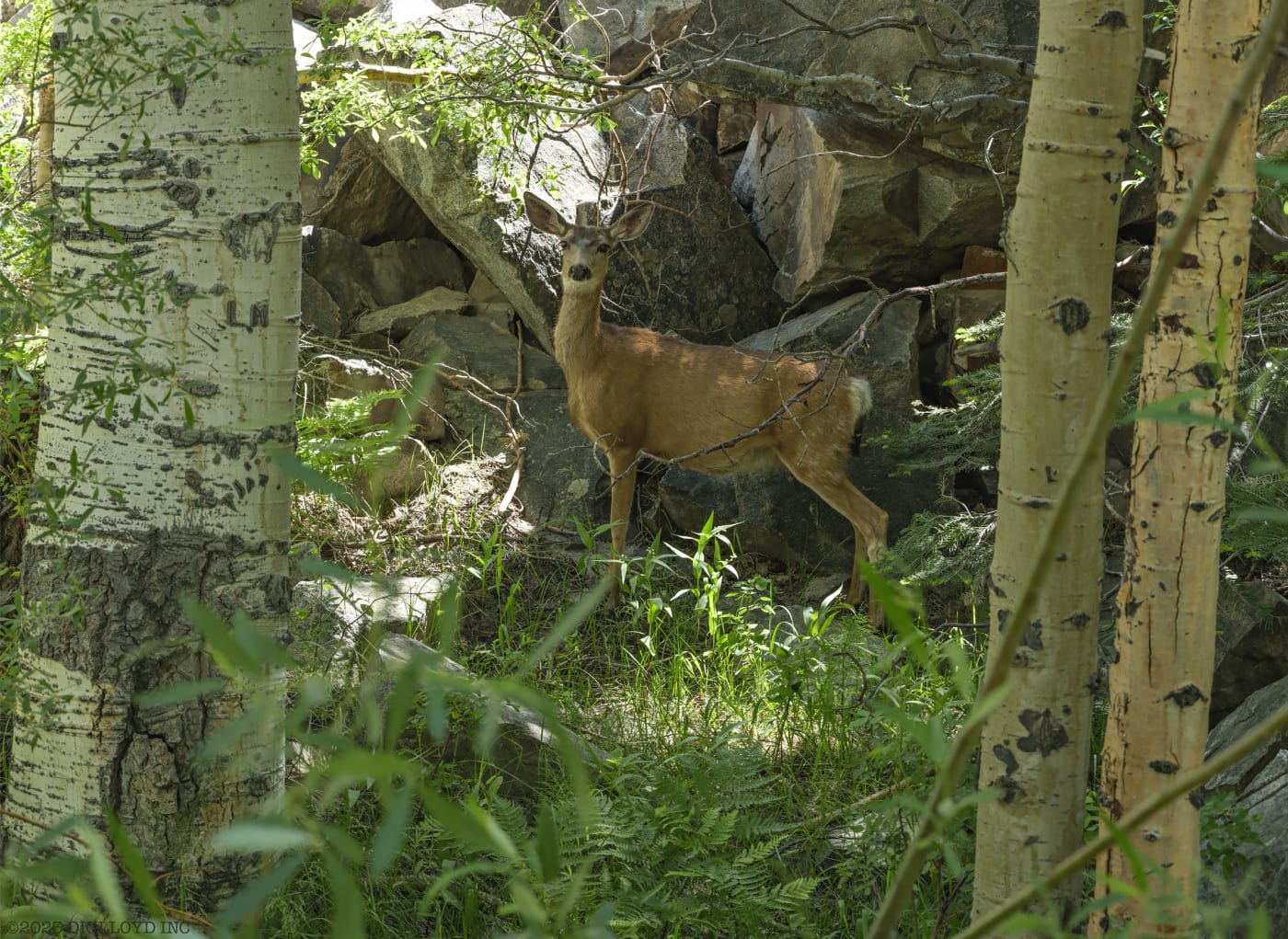
Photo data:
f9 @ 1/10 sec handheld IBIS=on electronic shutter, ISO 100; 2023-07-11 10:16:31
Fujifilm GFX100S + Fujifilm GF 35-70mm f/4.5-5.6 WR @ 57.6mm equiv (70mm) + polarizer Breakthrough Photography X4
ENV: Lee Vining Canyon, altitude 7600 ft / 2316 m, 70°F / 21°C
RAW: push 0.75 stops, +100 Shadows, +10 Whites, +10 Clarity, AI Denoise 10
High water flow
Fishing Lee Vining creek recently meant wading across flooded meadows into knee deep water to river’s edge, swollen with deep and powerful currents. No problem if you pay attention, and I did catch 4 large beautiful trout. Signage warns to remain aware of any rapid rise in water; those unfamiliar with the area would do well to heed it.
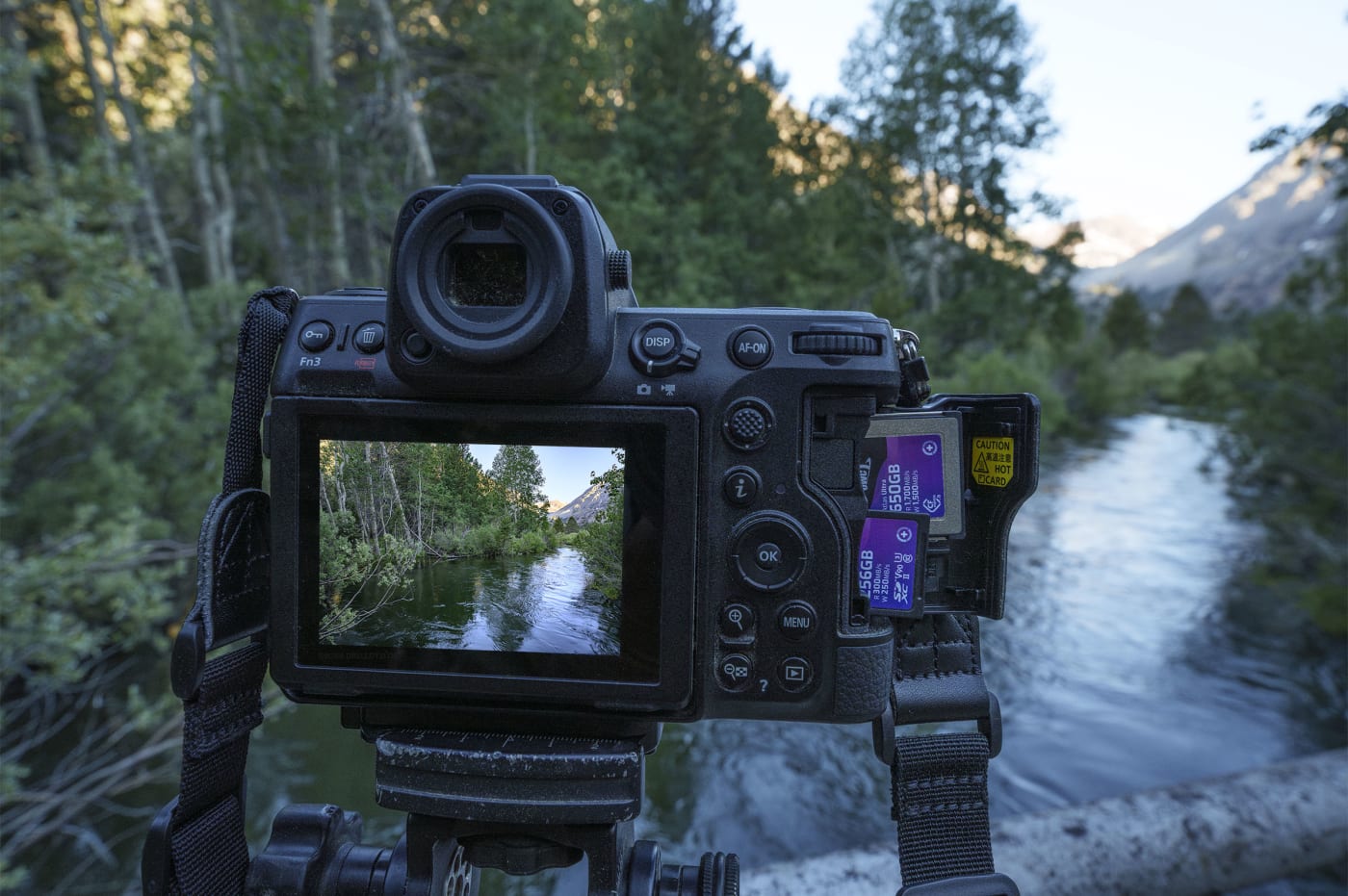
Photo data:
f11 @ 1/125 sec, ISO 800; 2023-07-10 06:52:13
Sony A7R V + Sony FE 12-24mm f/2.8 GM @ 24mm RAW: LACA corrected
Below, one of the areas you do not want to get anywhere near the water!
About the Author
Lloyd Chambers is a software engineer, cyclist, Mac expert, writer and photographer. His popular Diglloyd.com blog covers a wide variety of articles and guides for professional and advanced photographers. In addition to Diglloyd.com, Lloyd also publishes WindinMyFace.com for hard-core cyclists, and MacPerformanceGuide.com, a resource for selecting and configuring a Mac for photographers.
 USA + International
USA + International OWC Canda
OWC Canda OWC Europe
OWC Europe